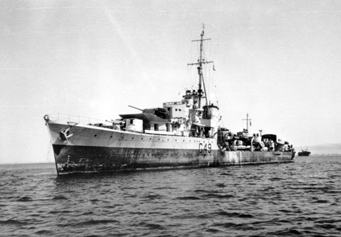By Lorraine Fildes
The Burma Campaign was a series of battles fought in the British colony of Burma. The campaign was waged against the Japanese in Burma, eastern India and southern China by the Allied forces. It is often claimed to be the ‘the forgotten war’ as it was considered by many to be of less importance than the campaigns in Europe and the Pacific.
The priority given by the Allies to the defeat of Nazi Germany, prolonged the Burma Campaign and divided it into four phases: the Japanese invasion, which led to the expulsion of British, Indian and Chinese forces in 1942; failed attempts by the Allies to mount offensives into Burma, from late 1942 to early 1944; the 1944 Japanese invasion of India, which failed; and finally, the successful Allied offensive in Burma from late 1944 to mid-1945.
The veterans of the Burma campaign feel that the lack of recognition of this campaign is wrong as it was one of the longest and most taxing campaigns of the war. Over a million men served on the Allied side and casualties and deaths were many. The Australian contingent was about 10,000. I will only be looking at the contribution of the RAN and that of HMAS Norman in the final phase of the Burma Campaign.

HMAS Norman was one of five N Class Destroyers commissioned into the Royal Australian Navy during World War 2. In January 1942 Norman was allocated to the Eastern Fleet and proceeded to the Indian Ocean where she was mainly engaged on Indian Ocean escort and patrol duties. From late 1944 however she also became involved in the offensive in Burma.
In December 1944 the final Arakan offensive began, with a British–Indian thrust along the coast of Burma. Naval support was required for this attack on the coast of Burma and several Australian destroyers were called in for this role.
On 18 January 1945 Norman sailed from Trincomalee to join the operations on the Burmese Arakan Coast. Sister ships HMAS Napier and Nepal were already engaged in the area having taken part in the capture of Akyab, the main Japanese base. Norman was part of the company escorting the battleship HMS Queen Elizabeth and the escort carrier HMS Ameer.
On 21 January Norman was one of the ships that covered the landing of Indian troops on Ramree Island, Operation Matador. There was little opposition on shore following the heavy shelling and the bombing of the Japanese defences. On 23 January Norman withdrew to Akyab.
On 26 January Norman sailed from Akyab as one of the escorts to the carrier HMS Ameer. The following day Task Force 65 joined, comprising the cruisers HM Ships Newcastle, Nigeria and Kenya, and the destroyer HMS Paladin, plus the cruiser HMS Phoebe already operating in the Burma theatre. The objective of this force was the seizure of Cheduba Island by Royal Marines borne in the cruisers. Norman supported RN units in Operation Sankey, the assault on Cheduba Island, Burma.
Naval bombardment began early on 26 January, Norman adding her quota of 214 rounds of 4.7-inch ammunition to the shellfire. The succeeding landings, following strafing by aircraft from HMS Ameer, met with little opposition.

Photo Source: Imperial War Museum
On 30 January Norman and the destroyer HMS Raider successfully silenced Japanese field guns on Sagu Island which had repulsed an attempted landing the previous day. The Allied forces were now in control of Burma.
Norman spent most of February 1945 on escort duties. On 1 March she sailed for Fremantle – her participation in the Burma Campaign was over.
The Burma Campaign, which drew to a close with the war’s end on 15 August 1945, was a long commitment for Australian forces. Whilst they were in a minority in Burma, Australians had been present in virtually every phase of the campaign. The cost exceeded 200 RAAF lives with smaller numbers for the Australian Army and Royal Australian Navy.
Australians who served in South-East Asia Command earned the Burma Star campaign medal (or a Burma clasp if they had previously earned the Pacific Star) and were to wear this medal with pride.
HMAS Norman’s wartime service in Burma was recognised with battle honours “Burma 1944–45”.
The full details of Norman and its participation in WW2 can be accessed at the following website: www.navy.gov.au/hmas-norman-i.
The book “Burma and India 1941-1945” published by the Department of Veterans’ Affairs December 2006 is part of a Series: “Australians in the Pacific War” provides an excellent account of the Burma Campaign. The digital version can be downloaded and at Burma and India 1941-1945.




